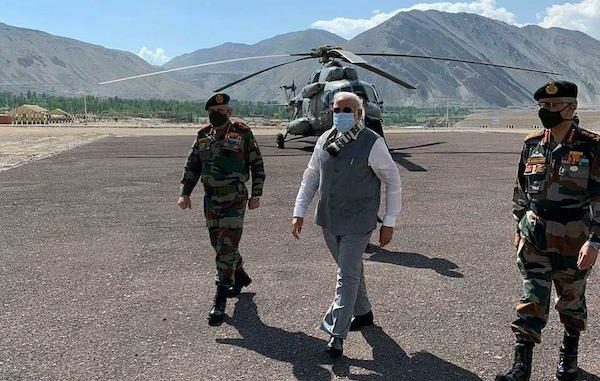
Prime Minister Narendra Modi on Friday, July 3 paid a surprise visit to Ladakh to assess the border situation.
I.S.Saluja
LEH / NEW YORK (TIP): :Modi, who reached Leh in the morning of July 3, had a major strategic session with the army commanders, where the 14 Corps Commander gave a detailed view of the situation since May, how the standoff started and also how it looks like as of today in terms of the estimated strength of the soldiers and their machinery on both the sides.
The PM was greeted with slogans of ‘Bharat Mata ki Jai’ and ‘Vande Mataram’ by the soldiers, who also raised their arms.
Modi was also briefed about the evolving situation since May at Galwan Valley, Pangong Tso, Demchok and Hot Springs in the eastern Ladakh by Lt Gen Harinder Singh, who had led the Indian delegation in the three rounds of talks with his Chinese counterpart Major General Liu Lin.
According to the latest situation, the soldiers on the two sides are to disengage as part of de-escalation, that is, both sides have to scale down the aggressive posturing, though the standoff position would remain till the two sides sort out all the issues.
The PM was accompanied by Chief of Defense Services Gen Bipin Rawat and Chief of Army Staff Gen MM Naravane.
In an obvious warning to China, Modi said : “Era of expansionism has ended; it is time for development”.
Here are some excerpts from Modi’s address to soldiers posted at India – China border.
“I am again paying respect to brave soldiers who sacrificed their lives in Galwan Valley”.:
“Bravery you have shown recently has sent a message to the whole world about India’s strength”.
“Our resolve for ‘Atmanirbhar Bharat’ becomes stronger because of you and your strong resolve”.
“Your willpower is as strong and firm as the Himalayas; the whole country is proud of you”..
“Era of expansionism has ended; it is time for development”.
“We are putting adequate focus on requirement of armed forces”.
“Bravery is a prerequisite for peace”.
“You have shown exemplary dedication in Galwan Valley; the country is proud of all of you”.
Background to the conflicts:
India and China, two nuclear-armed Asian neighbors, are in a tense diplomatic and military standoff following their first deadly border clash in more than 40 years.
The June 15 incident in the disputed Galwan Valley, an arid Himalayan area along the Line of Actual Control (LAC), the de facto border between the two nations, left 20 Indian soldiers dead. China has yet to officially declare its casualties.
Indian and Chinese troops have been engaged in the standoff since early May at several points along the 3,500km (2,200-mile) LAC, most of which remains undemarcated.
The fighting on June 15 was triggered by a disagreement over two Chinese tents and observation towers that Indian officials said had been built on its side of the LAC.
Chinese troops breached the Line to set up temporary “structures” in the Galwan Valley even after military officials had reached an agreement on June 6 to de-escalate, Indian Foreign Minister Subrahmanyam Jaishankar told China’s senior diplomat, Wang Yi, in a phone call.
The problem arose when an Indian patrol visited the area near a ridge to verify a Chinese assertion that its troops had moved back from the LAC, two government sources told Reuters news agency.
The Chinese troops had thinned out, leaving behind two tents and small observation posts, which the Indian party demolished, the sources said.
A large group of Chinese soldiers arrived and confronted the Indian troops. It was not clear what happened next, but the two sides soon clashed, the Chinese soldiers reportedly using iron rods and batons with spikes, killing 20 Indian soldiers and wounding dozens of others.
China has not said anything about any losses in the hand-to-hand combat.
Experts mainly cite two reasons for the deadliest clash since 1975.
A major reason, according to some experts, is linked to India’s unilateral move last year to repeal Article 370 of the Indian constitution, which had guaranteed a measure of autonomy to the former Jammu and Kashmir state, which also included the disputed areas in Ladakh region.
China, which, like Pakistan, saw India’s move as unilaterally affecting its territory, strongly denounced the move at the UN Security Council last year.
Analysts also believe the current standoff is also a result of China’s pushback against India’s recent construction of infrastructure in border areas.
India inaugurated the 255km (158-mile) Darbuk-Shyok-Daulat Beg Oldie (DSDBO) road, built along the LAC, last year. China objected, seeing the move as a threat to its interests in the region.
The heightened tensions between the world’s two most populous countries have drawn international concerns, with the United Nations urging both sides “to exercise maximum restraint”.
China’s economic corridor to Pakistan and Central Asia passes through Karakoram, which is close to Galwan Valley, the site of the June 15 clash. Galwan Valley is close to Aksai Chin Plateau, which is under Chinese control but claimed by India.
According to Happymon Jacob, professor of international relations at New Delhi-based Jawaharlal Nehru University, China considers the Ladakh region crucial for its “access to Central Asia and CPEC project with Pakistan in which they [China] have invested billions of dollars [about $60bn].”
Chinese foreign ministry spokesman Zhao Lijian said he was unaware of the specifics but that the Indian army had crossed into Chinese territory in several places in recent days – violating the agreement reached on June 6 – and that they should withdraw.
Calling it a “deliberate provocation” on New Delhi’s part, Zhao said: “The rights and wrongs… are very clear and the responsibility rests entirely with the Indian side.”
In response, India’s foreign ministry spokesman Anurag Srivastava cautioned China against making “exaggerated and untenable claims” on the sovereignty of the Galwan Valley area.
India says China occupies 38,000 sq. km (15,000 square miles) of its territory in the Aksai Chin Plateau in the Himalayas, with 12,000 Chinese soldiers reportedly pushing across the border.
Modi’s denial of a Chinese incursion triggered a controversy, with opposition leaders accusing the government of intelligence failures and asking why the clash happened in the first place.
Ashley Tellis, senior fellow at the Carnegie Endowment for International Peace, believes the latest Chinese advances in the Ladakh region leaves India with “painful” choices.
“Beijing has moved into disputed territories that did not host a continual Chinese presence as recently as January 2020,” Tellis wrote on June 4, days before the brawl.
Satellite pictures taken by Earth-imaging company, Planet Labs, in the days leading up to the clash, also suggest increased Chinese activity at the Galwan Valley.
“Looking at it in Planet, it looks like China is constructing roads in the valley and possibly damming the river,” Jeffrey Lewis, director of the East Asia Nonproliferation Program at California‘s Middlebury Institute of International Studies, told Reuters.
“There are a ton of vehicles on both sides [of the LAC] – although there appear to be vastly more on the Chinese side. I count 30-40 Indian vehicles and well over 100 vehicles on the Chinese side.”
In addition to its dispute with China, India has found itself at loggerheads with two other neighbors – long-standing rival Pakistan, and Nepal.
Nepal and India have historically enjoyed good ties, but now find themselves engaged in what experts have called a cartographic war over border regions.
Last week, Nepal’s Parliament approved a new map for the country, which includes land controlled by India.
“On the one hand, the major power in the region, China, is against India and on the other hand, smaller neighbors, which have been traditionally very friendly to India, are also negatively disposed to India. I think that is a major policy failure,” Jacob told Al Jazeera.
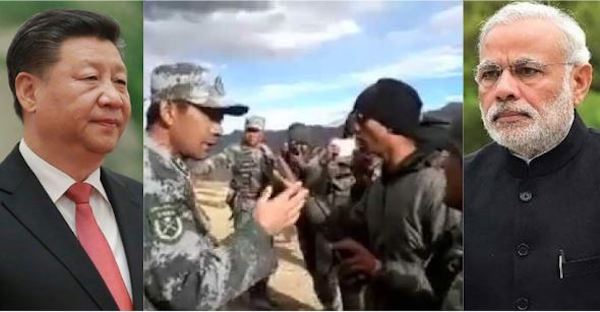
The Reaction in India
The reaction in India to Chinese advances has been one of outrage, with citizens and trade associations calling for the Modi-led government to boycott Chinese goods.
Protesters across the country were seen burning Chinese flags and products, while videos on social media showed teenagers destroying their Chinese-made mobile phones.
The Reaction abroad
Some Indian American groups in US, owing allegiance to the ruling BJP , have called for boycott of Chinese goods. These groups, at places , like New York, have called for protests against China.
Beijing is India’s biggest trading partner, with annual bilateral trade worth $92bn. The trade imbalance between the two is significant and favors China heavily.
In an interview to The Economic Times, Shyam Saran, former Indian foreign secretary, said India should avoid any “knee-jerk reactions” against China, claiming that it would be impossible for New Delhi to find alternative suppliers in the near future.
Jacob believes India should reach out to Quadrilateral Security Dialogue, also known as Quad – an informal strategic forum that includes India, Japan, Australia and the United States – to take on China.
“If the USA makes noises in favor of India and strengthens the Quad, it will send a message to China that we will take aggressive steps and will defend our interest,” he said.
Meanwhile, India has bolstered defense amid tensions along China border.
India on Thursday, July 2, approved the purchase of 33 Russian fighter jets and upgrades to 59 war planes at a cost of ₹18,148 crore amid rising tensions with China and about two weeks after the deadliest border clash in more than four decades between the two Asian nations.
The order includes 21 MiG-29s that would be purchased directly from Russia and a dozen Sukhoi Su-30MKIs that would be produced under license by state-run Hindustan Aeronautics Ltd (HAL). In addition, 59 MiG-29 jets would be upgraded in Russia, the defense ministry said in a statement.
The approval by the ministry’s defense acquisition council came on a day Prime Minister Narendra Modi spoke to Russian President Vladimir Putin. The Russian President reiterated his commitment to “further strengthen the special and privileged strategic partnership between the two countries in all spheres”, an Indian foreign ministry statement said. The statement did not say whether the two leaders discussed India’s border tensions with China .
India’s foreign ministry spokesman Anurag Srivastava said on Thursday, July 2, that New Delhi and Beijing will “continue their meetings both at the military and diplomatic levels… in the future to resolve the issue (current boundary tensions) to mutual satisfaction.”
That Russia seemed to respond to India’s list for defense purchases at a time of tensions with China—seen a strong partner of Russia—together with support for New Delhi from countries like the US and France shows what “the global mood is like” on the issue of India-China tensions, said Harsh Pant, professor of international relations at London-based King’s College. “The support for India remains broad. It would be a smart strategy on the part of China to take this into account,” he said.
The orders for the fighter jets as well as 248 indigenously developed beyond-visual-range ASTRA air-to-air missiles, with the capacity to engage and destroy highly maneuvering supersonic aircraft during night or day—besides long-range land attack missile systems having a firing range of 1,000km are expected to come as a shot in the arm for India’s military, especially the Indian Air Force whose squadron strength is now down to 30 from the sanctioned 42.
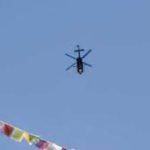
“While the MiG-29 procurement and upgradation from Russia is estimated to cost ₹7,418 crore, the Su-30 MKI will be procured from HAL at an estimated cost of ₹10,730 crore,” the statement said.
In total, the defense acquisition council approved contracts worth ₹38,900 crore, of which ₹31,130 would be purchased locally including ammunition for Pinaka multiple rocket launcher, long-range land attack cruise missile and the Astra missiles for navy and air force.
The tensions with China had prompted defense minister Rajnath Singh to visit Russia last month and meet senior members of government in Moscow to ensure supplies of spares and weapons systems. Despite India diversifying the sources from where it buys its military hardware in recent decades, an estimated 60% of its arsenal contains Russian origin systems making Delhi depend on Moscow for critical spares .
India’s defense equipment purchases from Russia may irk US which has always expressed displeasure with India buying defense equipment from Russia.
(With inputs from PTI, ALJAZEERA)


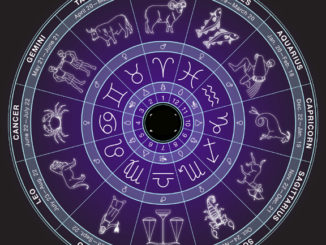

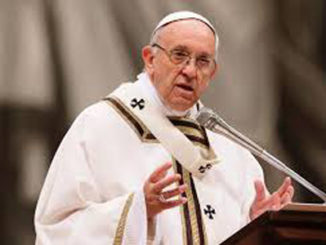
Be the first to comment